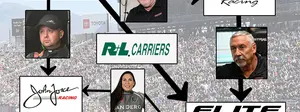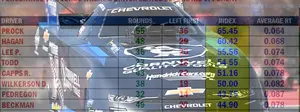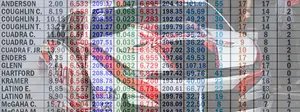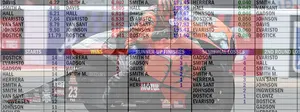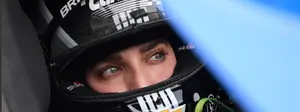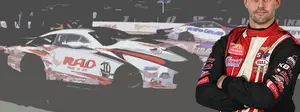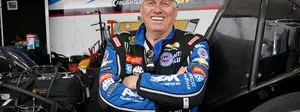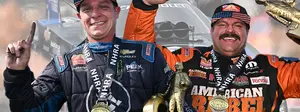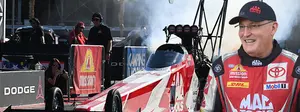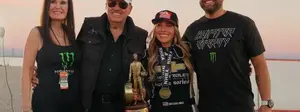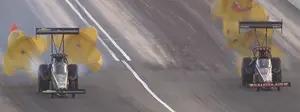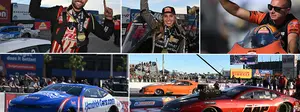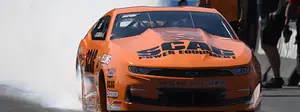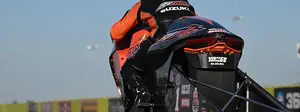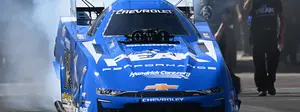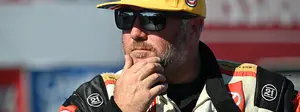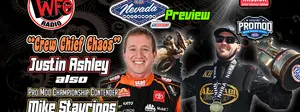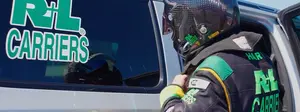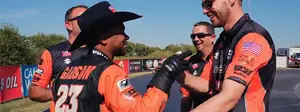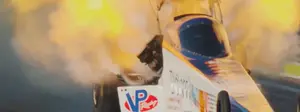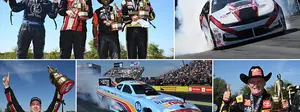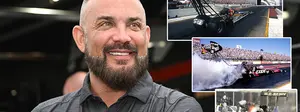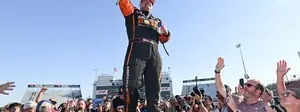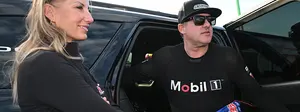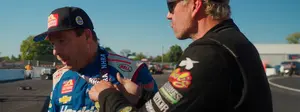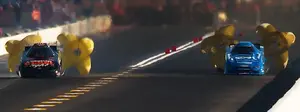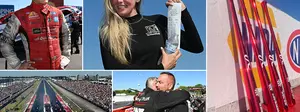

NHRA and Pomona: A powerful legacy that dates back more than 70 years
The story of Pomona Raceway, renamed Auto Club Raceway at Pomona in 2006 and soon to be In-N-Out Burger Pomona Dragstrip, essentially mirrors the history of organized hot rodding: Responsibly minded members of car clubs joined forces with foresighted civic and law-enforcement officials to replace dangerous street racing with sanctioned competition at designated sites.
Street racing was a serious epidemic in Southern California in the late 1940s. The late Chuck Griffith, then the president of Choppers Car Club, which became the Pomona Valley Timing Association (PVTA), said, “We had several friends who were killed in street racing accidents, and our club was real serious about getting everyone off the streets. When I first met Pomona Police Chief Ralph Parker, he was a regular motorcycle officer in the late 1940s, and he knew who the racers were and was giving them a lot of tickets. Parker found out about our club meetings, and he began sending another Pomona police officer, Bud Coons [who would later become a member of the original NHRA Safety Safari], as an emissary to our meetings."

NHRA Founder and President Wally Parks and team had spent the first two years of NHRA (1951 and 1952) working tirelessly with police officials across the country, asking for their help and cooperation in turning the public opinion about hot rodders. The real breakthrough and model of this desired cooperation had come in Pomona, when Chief Parker, who in December 1951 had written a hot rodding-favorable article in the FBI Law Enforcement Bulletin, which is distributed to law-enforcement groups throughout the United States, tasked Coons to begin interacting with the Choppers. Coons got a firsthand look and understanding of the kind of people the sport attracted. Parker was honored in 1969, when Parks and the NHRA christened the Pomona Raceway track as "Parker Avenue."
In a savvy move to further legitimize themselves in the eyes of civic officials, a popular local car club, the Choppers, rebranded themselves as the Pomona Valley Timing Association because the group's accountant thought it would be a good idea if the organization was going to be working with civic officials.
The Choppers also began using a timing system developed by Otto Crocker, who had also worked with Parks during his time with the dry lakes-based Southern California Timing Association. All of it helped reinforce the idea that the car club was serious about its hot rodding.
The Choppers first ran at an airstrip in nearby Fontana, Calif., but the area was prone to high winds, and Parker was able to broker a deal with the Fairgrounds to pave an asphalt strip, eight-tenths of a mile long and 70 feet wide, down the western side of the Fairgrounds.
The city paid for the paving out of its own pocket, with the agreement that the Choppers would repay the city out of the net profits realized by the operation of the strip.
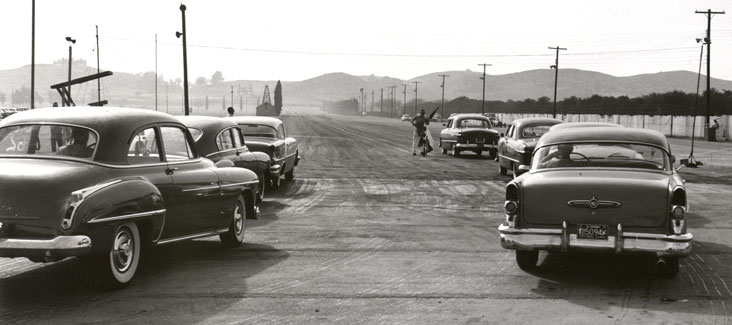
Races began being held at Pomona Raceway, and trophies were given to the eliminator winners and war bonds to the Top Eliminator winners. PVTA worked with Fairgrounds Manager Phil Shepard.
“They helped us with many things, such as more equipment, along with painters, electricians, etc.," said Griffith.
In addition to providing an organized format for the events, PVTA dealt with many outside parties.
“We had to answer to Chief Parker, the Pomona City Council, the Fairgrounds, and, of course, the city of La Verne, which had a lot of local churches in the area. We did whatever we could do to make them like us, not hate us, and for the most part, it worked out real well."
By season's end in 1952, nearly 200 entries jammed the Pomona strip each weekend.
“That's how Wally found out about us," said Griffith. "He began stopping by our races at Fontana and then Pomona. When NHRA decided to become more involved with drag racing, all of the car clubs met with Wally at Bakersfield to formulate the rules for his new sanctioning body."
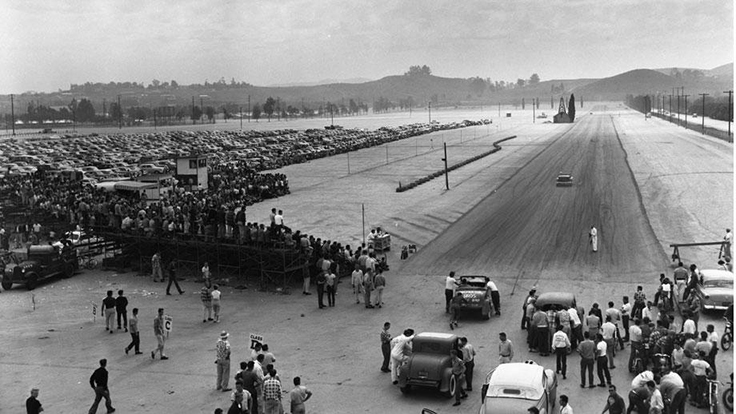
NHRA held its first sanctioned races in Pomona in 1953 and 1954, and when it came time for the first NHRA Winternationals in 1961, six years after the first NHRA Nationals had been conducted in Great Bend, Kan., no one was surprised that Pomona Raceway was chosen as the host track.
“Wally always had a real fondness for Pomona," recalled Griffith. "It's like you always remember your first car. Pomona was Wally's first dragstrip, and no matter how much more modern the other ones became, Pomona was always Wally's favorite."
Fast forward to 1960, where NHRA racing had grown to the point of crowning national champions at an event that became known simply as “the Nationals” (and would not become known as the U.S. Nationals until 1972). In 1960, it was the only “national” event on the calendar and had hopscotched around the Midwest, from Great Bend, Kan., (1955) to Kansas City, Mo., (1956) to Oklahoma City (1957-58) and then to Detroit (1959-60) and was preparing for its move to Indy in 1961.
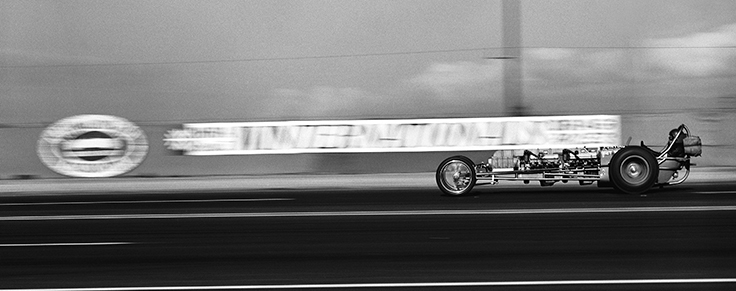
“NHRA's leaders saw the need for a major drag racing event west of the Rocky Mountains,” Parks said. “NHRA selected Pomona Raceway, where much of drag racing's rules and policies had been developed. From day one, it was a natural. Closely following the annual Tournament of Roses Parade in nearby Pasadena, the Winternationals was generally assured of good weather.”
Griffith said that it didn't take much persuasion by NHRA to convince local officials of the many benefits of staging the Winternationals. Wally presented it to them in terms of dollars and cents, citing how many people would be coming in from out of town and how much they would be spending for food and lodging. And, of course, it would further their original goal of getting the kids off the streets. There really wasn't much resistance.
Of all the tracks on the NHRA schedule, none is located so deeply within a city. Pomona Raceway still exists where acres of orange groves have given way to massive housing and commercial developments, and it is a great testament to all who have helped organize and/or participated in this great event for the last half-century and the foresight and vision of those who continue to keep the dream alive.























